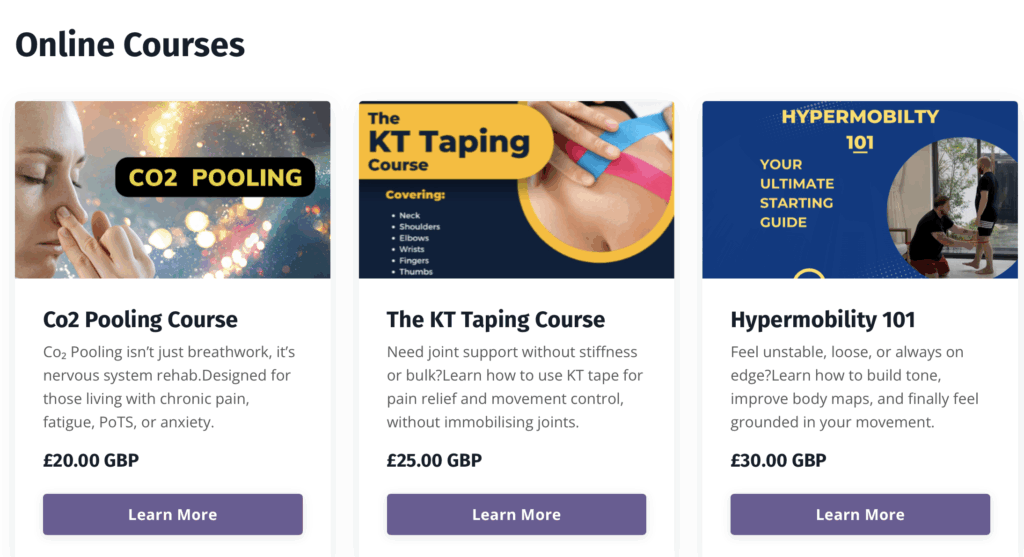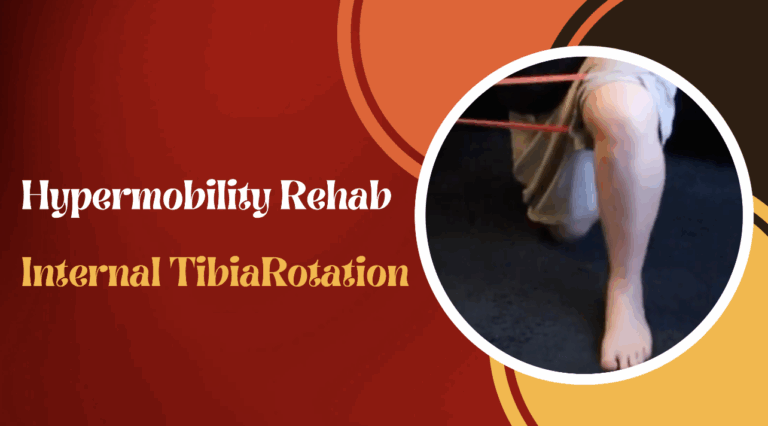- POTS and Exercise: The First Step Everyone Misses - 27 June 2025
- The Missing Link Between Breathlessness, Fatigue, and Chronic Pain: Understanding CO₂ Tolerance - 19 June 2025
- What is Mast Cell Activation Syndrome? - 12 May 2025
Ever found yourself rubbing your neck after a long day, wondering why it feels like you’ve been hanging by a coat hanger? Well, you’re not alone. ‘Coat hanger pain’, as it’s colloquially known, is a phenomenon that has puzzled many, leading them down a rabbit hole of research and self-diagnosis. But what really lies behind this peculiar name? Is it just a quirky term for a common ache, or is there more to the story?
Now, I’ve delved deep into various blogs, articles, and studies to unravel this mystery for you. And trust me, it’s been quite the journey! From understanding the anatomy of our neck and shoulders to exploring potential causes and remedies, this mega blog aims to be your one-stop guide. So, ready to embark on this enlightening journey with me? After all, who doesn’t love a good mystery, especially when it’s about our own bodies?
Coat hanger pain, often described as a dull ache or tension in the neck, shoulders, and sometimes the head, can be quite the conundrum. It’s like that pesky knot in your shoelace that you can’t quite untangle, no matter how hard you try. But what causes this peculiar discomfort? And more importantly, how can one alleviate it?
This article covers:
ToggleThe Underlying Causes
The human body, in all its complexity, often presents us with medical mysteries that even the brightest minds grapple with. ‘Coat hanger pain’ is one such enigma that has left many scratching their heads. While its exact origins remain elusive, there are several compelling theories that attempt to shed light on this peculiar discomfort.
The Blood Flow Theory
One of the leading theories revolves around the concept of blood circulation, particularly to the brain. The vertebrobasilar system, a crucial network of arteries, is responsible for supplying blood to significant portions of the brain, including areas that manage sensory information, balance, and motor functions. Now, imagine this system as a bustling highway. What happens if there’s a sudden roadblock or detour? Chaos ensues, right? Similarly, any disruption in the vertebrobasilar system can lead to a cascade of symptoms.
The analogy of a garden hose is rather apt here. If there’s a kink or twist in the hose, the water flow gets disrupted, leading to reduced pressure at the output. In the same vein, if there’s an obstruction or reduced blood flow in the vertebrobasilar system, it can manifest as symptoms like dizziness, visual disturbances, and of course, the characteristic coat hanger pain. It’s as if the brain is sending out an SOS, alerting us to the fact that it’s not receiving the nourishment it needs.
The Muscle Tension Theory
On the other end of the spectrum, we have the muscle tension theory. Our muscles are a bit like elastic bands; they’re designed to stretch and contract. However, just as an overstretched elastic band loses its elasticity over time, our muscles, when subjected to prolonged tension, can lead to discomfort and pain.
Consider the life of a musician, for instance. Hours of practice, holding the same posture, can strain the muscles, leading to aches and pains. Similarly, in our increasingly sedentary lifestyles, where many of us are glued to our desks and screens, poor posture becomes a silent culprit. Slouching, leaning, or even just sitting for extended periods can put undue stress on the neck and shoulder muscles. It’s reminiscent of that feeling when you’ve been carrying a heavy shopping bag for a tad too long. At first, it’s manageable, but over time, the weight starts to pull, and the strain becomes palpable.
Moreover, this muscle tension isn’t just a standalone issue. It can lead to other complications. For instance, tense muscles can compress nerve pathways, leading to tingling sensations or numbness. They can also restrict blood flow, tying back to our first theory, creating a vicious cycle of discomfort.
While the exact cause of coat hanger pain remains a topic of spirited debate and research, these theories offer valuable insights. Whether it’s a circulatory concern or a muscular one, understanding the potential causes is the first step towards finding effective remedies. And as always, listening to our bodies and seeking timely medical advice is paramount. After all, as the old saying goes, “Prevention is better than cure”, wouldn’t you agree?
Symptoms and Diagnosis of Coat Hanger Pain
Ah, the elusive coat-hanger pain. Have you ever heard of it? If you haven’t, you’re not alone. But for those who’ve experienced it, the discomfort is all too palpable. Let’s dive deep into understanding the symptoms and how it’s diagnosed, shall we?
The term “coat hanger pain” might sound a tad peculiar, but its origins are quite straightforward. The name is derived from the specific region of discomfort, which, you guessed it, mirrors the shape of a coat hanger. This pain predominantly targets the neck, especially in the suboccipital and paracervical regions. Now, if you’re scratching your head wondering where on earth these regions are, imagine the back of your neck and the areas around it. Got it? Good.
Now, here’s the kicker. This pain is often associated with conditions like POTS (Postural Orthostatic Tachycardia Syndrome) and other forms of dysautonomia and low co2. But what exactly does it feel like? Well, it’s akin to a persistent ache, a tightness that just doesn’t let up. The pain often affects both sides of the neck, but don’t be surprised if it’s one-sided on some days. It’s a bit like having a monkey on your back, only this one’s got a grip on your neck.
The pain and muscle tightness results from a lack of proper blood flow and oxygen delivery into the muscles. Imagine running a marathon and feeling that burn in your legs. That’s your muscles crying out for oxygen. Similarly, the muscles in the neck and shoulders experience this lack of oxygen, leading to the discomfort known as coat hanger pain. Which is why so many with Pots struggle to exercise.
But how do medical professionals diagnose this condition? It’s not as simple as taking a blood test or an X-ray. Diagnosis is typically rooted in the patient’s medical history, a thorough physical examination, and its association with other conditions like POTS. It’s essential to differentiate coat hanger pain from other potential causes of neck pain, such as spinal issues or fibromyalgia.
Now, here’s a nugget of information that might surprise you. Coat hanger pain is seen in a whopping 93% of patients with dysautonomia and in 51% of patients with multiple system atrophy. It’s one of the many “invisible” symptoms seen in people with dysautonomia and/or Ehlers-Danlos Syndrome. This pain is often misdiagnosed as a spinal problem or even fibromyalgia. However, the root cause is believed to be poor blood flow in the muscles of the upper back and neck, exacerbated by muscle imbalance and autonomic malfunction.
Association with Autonomic Dysfunction
Ever wondered why some conditions seem to be intertwined, like threads in a rich tapestry? Well, coat hanger pain and autonomic dysfunction are two such conditions, intricately linked in a dance of cause and effect. Let’s embark on a journey to unravel this connection, shall we?
Autonomic dysfunction, for those who might be scratching their heads, refers to the malfunctioning of the Autonomic Nervous System (ANS). The ANS, in its prime, is like a maestro, orchestrating various bodily functions without us even lifting a finger. From our heartbeat to our digestion, it’s all under its purview. However, when this system goes haywire, it can lead to a plethora of symptoms, one of which is the infamous coat hanger pain.
Now, you might be thinking, “How on earth does this relate to POTS and other forms of dysautonomia?” Well, here’s the kicker: POTS, or Postural Orthostatic Tachycardia Syndrome, is a type of autonomic dysfunction. Patients with POTS often experience a rapid increase in heart rate when they stand up. And guess what symptom often accompanies this? You’ve got it – coat hanger pain.
But why does this pain manifest? It’s believed that the pain arises due to the body’s response to decreased blood flow and oxygen delivery to the muscles, especially in the neck and shoulder region. It’s a bit like a car running low on fuel; it starts to sputter and stall. Similarly, when our muscles don’t get the oxygen they crave, they protest, leading to the characteristic pain.
Interestingly, it’s not just POTS that’s the culprit here. Coat hanger pain has also been observed in patients with pure autonomic failure and multiple system atrophy. It’s like a common thread weaving through various conditions, highlighting the importance of the ANS in our overall well-being.
Now, here’s a nugget of wisdom: If you or someone you know is grappling with this pain, lying down or performing manoeuvres that boost blood pressure might offer some respite. It’s akin to giving that sputtering car a splash of fuel, just enough to get it going again.

Practical Tips for Managing Coat Hanger Pain
Ah, the age-old quest for relief. When it comes to managing the pesky coat hanger pain, it’s not just about popping a pill and hoping for the best. No, my friend, it requires a bit more finesse and understanding of one’s body. So, let’s dive into some practical tips that have been tried and tested, and might just be the lifeline you’ve been searching for.
1. Positional Release or Postural Time Out:
Ever felt like you just need a break from, well, standing? This strategy offers temporary relief from the relentless pull of gravity. Before the pain escalates to unbearable levels, lay on your back in a comfortably supported position, knees raised, for about five minutes. Think of it as a mini-vacation for your muscles. Doing this regularly, perhaps once an hour or during those mid-morning and mid-afternoon breaks, can be especially beneficial. It’s a bit like hitting the reset button on your posture muscles and autonomic nervous system. This brief respite allows your muscles to relax and encourages more normal circulation, interrupting the build-up of tension and pain.
2. Support Your Arms:
Remember those days when you’d lug around heavy shopping bags and feel the strain in your arms? Well, sitting without proper arm support can have a similar effect. Opt for seating that cradles both your arms and spine. Chairs with armrests or even firm couches with pillows to prop up your arms can make a world of difference. It’s a bit like giving your arms their own comfy armchair. This reduces muscle strain and can be particularly beneficial if you have conditions like EDS.
3. Sit Supported:
Now, this might sound like a no-brainer, but the way you sit can either be your best friend or your worst enemy when it comes to managing coat hanger pain. If a chair with arm supports isn’t within arm’s reach (pun intended), try sliding your chair close to a wall. This allows you to lean back against the wall while resting one arm on the back of the chair. Switching positions now and then can also help balance the support between your right and left arm. And here’s a golden nugget of advice: use a small pillow or towel at your waist level when sitting. This simple trick lifts your chest and positions your shoulders and neck more efficiently, translating to decreased muscle strain.
4. Boosting Muscle Tone and Oxygenation:
Ever heard the saying, “Use it or lose it”? Well, when it comes to our muscles, this old adage rings particularly true. Maintaining good muscle tone isn’t just about looking fit and fabulous (though that’s a lovely bonus); it plays a pivotal role in supporting our skeletal system and reducing undue strain.
- Engage in Regular Exercise:
Now, I’m not suggesting you sign up for the next Ironman competition, but incorporating gentle exercises into your daily routine can work wonders. Activities like swimming, pilates, or even a brisk walk in the park can help improve muscle tone. Not only does this provide better support to the affected areas, but it also promotes overall well-being. And who wouldn’t want a bit of that?
- Oxygenate Those Muscles:
Breathing. It’s something we do without a second thought. But are we doing it right? Deep, diaphragmatic breathing can significantly increase the oxygen supply to our muscles. Imagine giving your muscles a fresh breath of air, quite literally! This enhanced oxygenation can alleviate the pain associated with muscle fatigue. So, the next time you find yourself slouched over your desk, take a moment. Sit up straight, breathe in deeply, hold for a few seconds, and exhale slowly. It’s like a mini spa session for your muscles.
In the Grand Scheme of Things…
So there we have it, a deep dive into the world of ‘coat hanger pain’. It’s a term that might have raised eyebrows at the start, but by now, it’s clear that it’s more than just a quirky name. It’s a genuine discomfort, a silent scream of muscles and nerves, echoing the tales of countless individuals. But, like any mystery, with the right tools and knowledge, we can decipher its secrets.
Isn’t it fascinating how our bodies, in all their intricate glory, communicate with us? Sometimes in whispers and at other times in cries of distress. Coat hanger pain is one such cry, a plea for understanding, a call to action. And while the journey of understanding and managing it might seem like threading a needle in a haystack, it’s a journey worth embarking upon.
The world of medicine and health is vast, filled with uncharted territories and unsolved mysteries. But with every step we take, with every piece of knowledge we glean, we inch closer to a world where discomforts like coat hanger pain are but mere footnotes in medical journals.
Enjoyed Our Blog? Why Stop Here?
If you’ve found value in our posts, imagine the impact of a structured, science-backed course tailored specifically for fibromyalgia and its unique challenges. The Full Body Fibro Course is your ultimate starting point for understanding your body, improving mobility, and managing symptoms effectively.





